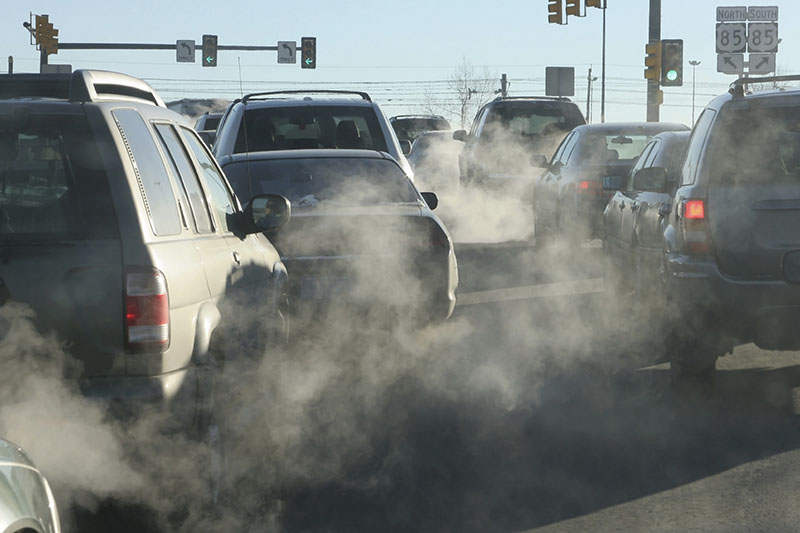TRUE: How researchers and cities can work together on vehicle emissions

We all were deeply shocked when we found out about the illegal practices of Volkswagen in September 2015. Other vehicle manufacturers at that time were quick to distance themselves from VW, claiming that their own vehicles performed well without the use of any defeat devices.
Today it is clear that VW is not even the worst offender. To note just one example of the abundant evidence on that score that has come to light: The German Ministry for Transport tested 53 Euro 5 and Euro 6 diesel vehicles in late 2015 and early 2016. The Euro 5 VW vehicle models equipped with a defeat device ranked somewhere in the middle. Real-world nitrogen oxides (NOx) emissions from a Land Rover were twice as high. And VW's Euro 6 models were among the cleanest, in line with the regulatory limit, while a Renault Kadjar model was found to emit more than 18 times the limit.
Knowing what we now do about the performance of most diesel cars and vans in Europe, we should not be surprised that nowadays a 40-ton truck emits less NOx than the typical compact diesel car. As a result, more than 11,000 European citizens die early, every year, because of excess NOx emissions from diesel engines. "Excess" here means that all of these people would have lived longer if vehicle manufacturers had obeyed the regulations that are already in place.
I still remember the discussions I had with vehicle manufacturers back in 2014. At that time, when we presented measurement data from diesel cars, the argument was always the same: The vehicle selected for testing must have been broken and/or the measurement itself was not carried out correctly. In any case, the observed high NOx emissions were dismissed as being only a single data point and by no means representative of the modern diesel cars that manufacturers were heavily advertising. The challenge for us researchers was always that vehicle emissions’ testing is expensive and individual measurements are vulnerable to attacks from the manufacturers’ lawyers.
Within the last two years this situation has radically changed, mainly for three reasons:
First, regulators and politicians are now sensitized to the issue. The testing carried out by the German Ministry for Transport is a good example. For many years the ministry carried out hardly any real-world vehicle emissions testing and certainly did not publish any such test results. As part of its investigation into VW, the ministry commissioned testing of 53 diesel vehicles and published at least part of the results (the CO2 emissions part of the results are still not public—no surprise given the findings leaked to German media).
Secondly, philanthropy has understood that independent and thorough vehicle emissions testing is essential if we want to minimize the environmental burden caused by vehicles on our roads. The Mercator Foundation funds ICCT’s work to develop a more realistic test procedure for CO2 emissions and fuel consumption at the EU level, and a group around Bloomberg Philanthropies, the FIA Foundation, and the Joshua and Anita Bekenstein Charitable Fund supports our work to carry out on-road tests of air pollutant emissions. It cannot be overstated that without such funding from philanthropies we could not have carried out the emissions testing that ultimately led to the investigations of VW. We need this freedom to carry out independent testing and to shed light on areas that remain out of the regulators’ spotlight.
Lastly, technical advances in recent years now allow us to test vehicle emissions more accurately and easily than ever before. Not long ago, vehicle emissions could only be tested in a laboratory—an extremely expensive process and easy to game, as the VW case has shown. Today, Portable Emissions’ Measurement Systems (PEMS) allow us to test vehicle emissions while driving outside a laboratory, on normal roads under normal driving conditions. However, these PEMS tests are still quite expensive and can still be gamed. A potential solution for the future could be remote sensing: A device the size of a large suitcase is placed next to a roadway and, using a light beam, measures the emissions of vehicles that pass by. Not just one or two vehicles a day but hundreds or thousands! It promises to be relatively cheap way to find out about the emission levels and one that is difficult to game, because the vehicle cannot detect that it is being tested. Using statistical methods it is then relatively easy for us researchers to determine which vehicle models show signs of being high emitters so that we can then carry out more thorough follow-up testing using PEMS and laboratory techniques to collect more, and more precise, data.
Cities suffer the most from high vehicle emissions. European Union regulations force cities to take action if they exceed ambient air quality standards and to protect their citizens against adverse health impacts. But cities can hardly take any action against high-polluting vehicles. The enforcement of vehicle emissions’ regulations is in the hands of the EU member states, and the responsible ministries in most cases are not really acting—as the current dispute between Italy and the European Commission about a defeat device in Fiat vehicles illustrates. More and more city administrators place their hopes in citizens themselves: If we all were better informed, we would take the right decision and purchase a clean vehicle rather than a high-polluting one. Wouldn’t we? The situation at the moment is confusing for consumers though, as a modern Euro 6 diesel car can have much higher real-world emission levels than a Euro 5 or even a Euro 4 one.
At the ICCT, we are now proudly supporting cities in better informing their citizens about real-world emission levels of new vehicle models. Together with our partners at GFEI, C40, the FIA Foundation and T&E, in March 2017 we announced that we would co-operate with the cities of London and Paris to launch The Real Urban Emissions Iniative (TRUE). The cornerstone of the TRUE project will be independent vehicle emissions testing, using remote sensing as well as PEMS and also laboratory measurements. Ultimately, we aim to build up a database with reliable and transparent emissions’ results that will help to inform citizens and lead to a cleaner vehicle fleet on our roads. The project will soon begin real-world testing, and we hope that other cities will join the initiative. Maybe one day, not too far in the future, we will have an interconnected network of vehicle emissions testing stations, scattered throughout Europe, providing us all with live information on the emissions performance of each vehicle manufacturer. That, I think, is our key to ensuring that we do not experience another ‘Dieselgate’.
Peter Mock was representing the ICCT at the Global Fuel Economy Initiative side event at the Leipzig ITF Annual Summit
